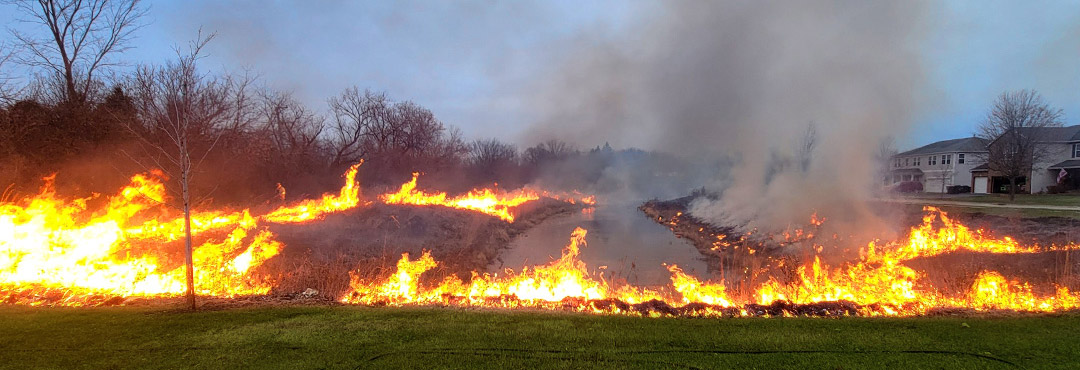
Before European settlement, ecosystems in the Midwest were exposed to periodic fire, ignited by Native Americans or lightning strikes. Plants native to Midwest prairies, woodlands, and wetlands are adapted to survive fire and even benefit from it. Fire serves to rejuvenate and strengthen native habitats by recycling nutrients back into the system and promoting flower, seed, and fruit production. Fire also helps to kill off plants not adapted to survive fire that might take over an ecosystem if not controlled. Unfortunately, these periodic fires have been all but eliminated in the Midwest in the last 150 years.
Restoration specialists at ILM recognize the importance of periodic fire and reintroduce fire in the form prescribed burnings. Prescribed burns in Illinois and Wisconsin are set intentionally after considering the safety of people and property, ideal weather conditions, wind direction and smoke management and are confined to a predetermined area. Our staff are specially trained and certified to conduct prescribed burns in Illinois and Wisconsin and consider safety to be their number one priority.
How Does Prescribed Burning Help Native Ecosystems?
Native grasses and wildflowers are adapted to survive fire. They have deep root systems that can grow several feet underground where the heat of the fire does not reach. This allows these plants to flourish once again following a fire event, taking advantage of the fresh nutrients introduced back into the soil to grow back stronger. This allows them to outcompete non-native weed populations and prevent them from taking over.
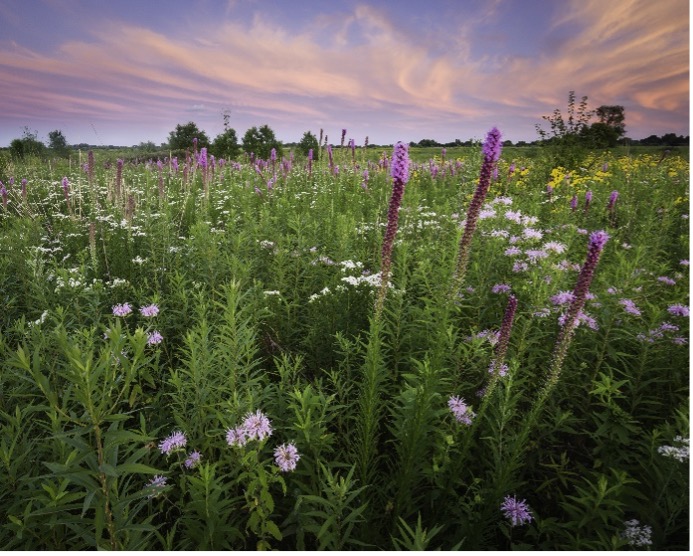
Many native trees such as oaks and hickories have evolved adaptations to protect them from fire injuries such as thick bark. Other species of trees cannot germinate until their seeds are exposed to the heat generated by fire. Prescribed fire in woodlands is especially important for the reestablishment of our oak ecosystems that used to dominate our landscape.

It should be noted that prescribed fire does not kill all invasive plant species but it does make management efforts easier. By burning off the chaff, it is easier to find target species like reed canary grass, thistle and teasel to treat with herbicide or remove by hand. Not to mention that the blackened landscape attracts more sun and gives desired plant species a head start when burns are done in the Spring!
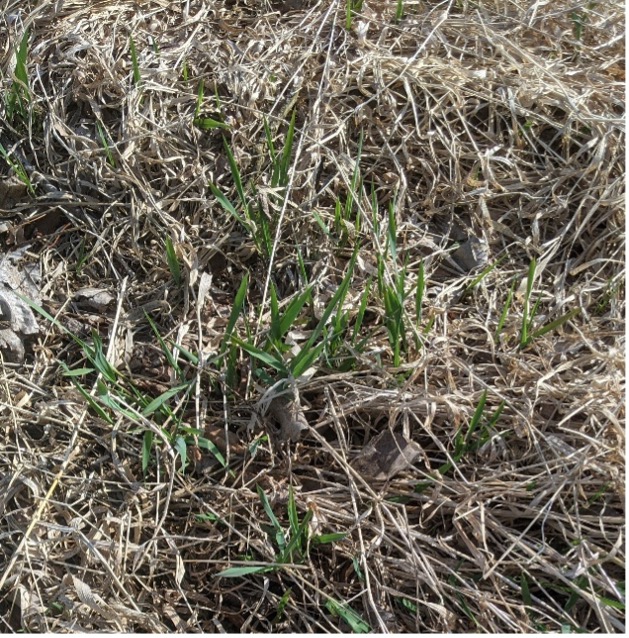
Invasive reed canary grass hidden by chaff.
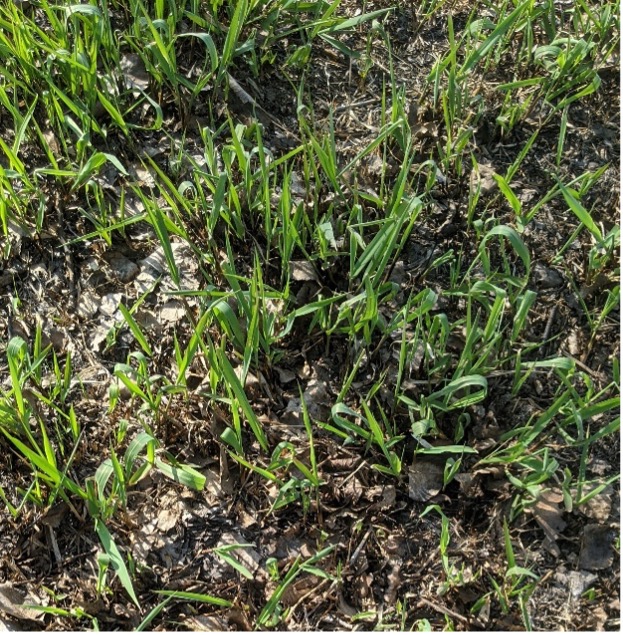
Invasive reed canary grass exposed after a prescribed burn.
What Does a Prescribed Burn Look Like?
Prescribed burns are usually conducted in spring or fall when wildlife is in hibernation or have migrated from the area. In Illinois and Wisconsin, the spring burn season is longer than the fall season and typically takes place between early March and mid-April, depending on the snow. Fall burns normally start in November following the first heavy frost and can continue until it snows. Every situation is different and so we always take site-specific conditions and the needs of the client into consideration when deciding when to burn.
Preparation
- Prescribed burnings require state and local permits which ILM secures on behalf of the landowner. These permits can take up to 120 days and so planning for the burn is very important.
- All ILM staff participating in controlled burns have received special training, which involves learning fire behavior, methods of ignition, fire suppression, proper use of equipment and safety measures for properly managing fire.
- A written burn plan approved by a certified Burn Manager is developed for each individual site prior to the onset of the burn. It identifies control lines, potential hazards, weather conditions and management goals and objectives.
- We make every reasonable attempt to notify all potentially impacted neighbors of the date and time of the prescribed burn.
- ILM will notify the local fire department and emergency dispatchers on the day of the burn.
Burn Day
- The Burn Manager and team follow the instructions outlined in the site-specific burn plan.
- Firebreaks are established to contain the fire to the predetermined area.
- A pre-burn meeting is held to discuss the ignition plan, weather conditions, water sources, and escape routes.
- Backburn ignition begins. A backburn is a fire that moves against the direction of the wind (example: if the wind is coming from the Northwest, the point of ignition will be in the Southeast). This establishes a “blackline.” A blackline is the area of burnt material. As the backburn progresses, vegetation is consumed, and the area turns black. The wider the blackline, the lower the chance is for an escape outside of your burn breaks.
- Once a sufficient blackline has been achieved, headfirst ignition begins. A head fire is a fire that moves in the direction of the wind (example: if the wind is coming from the Northwest, the point of head fire ignition will be in the Northwest). A head fire consumes the remaining unburned vegetation between the crew and the already established blackline.
- All smoldering material is extinguished with the use of backpack sprayers and/or utility terrain vehicles mounted with tank sprayers.
- A final site walk is performed to make sure the area is secure.
- A post-burn meeting is conducted to discuss the burn and thank the crew.
- Although our goals change according to the site, we typically look to burn at least 70% (50% can be reasonable for wetlands) of the targeted area. In some cases, we will burn a portion of a site one year and the remainder the following year to allow for the movement of wildlife.
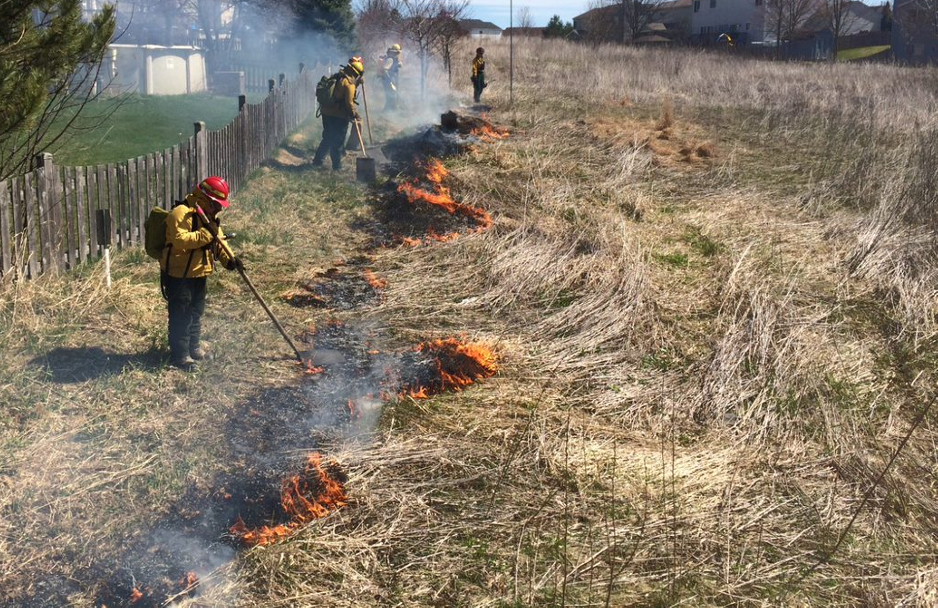
Post Burnings
- Within two to three weeks in spring, prairie plants will sprout and grow back taller, more vigorous, and often with more flowers.
- When a prescribed burn is done on the forest floor, wildflowers are usually more abundant the next spring. If you look closely, you may see evidence of fire, such as lightly charred fallen logs, but in general, burns make the woods and the prairie greener and more beautiful.
- Prescribed burnings expose non-native, invasive plant species making them easier to treat with herbicide or pull by hand.
Are Prescribed Fires Dangerous?
Any fire can be dangerous if not kept under control. Through training and experience, ILM’s controlled burn crews can anticipate problems and take actions as necessary to ensure a safe prescribed burn.
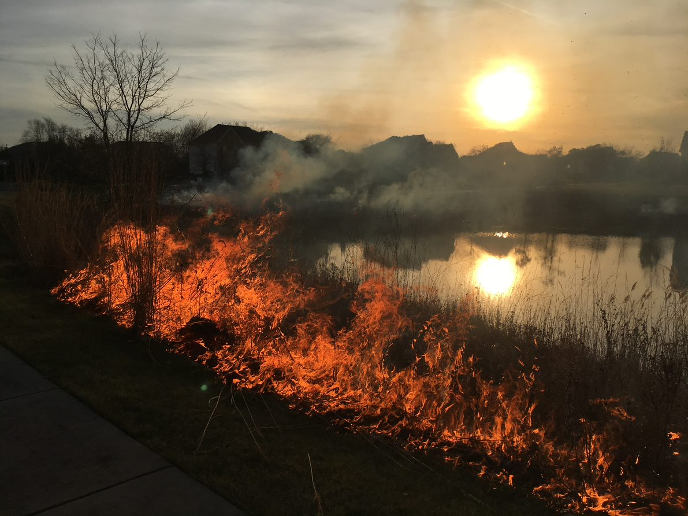
Contact Us Today to Schedule a Prescribed Burn in Illinois or Wisconsin
Interested in learning more information about our prescribed burns or looking for other holistic strategies to care for your environment? Contact us today! We are happy to help you improve the beauty and health of your lake, pond, wetland, woodland, or prairie.

